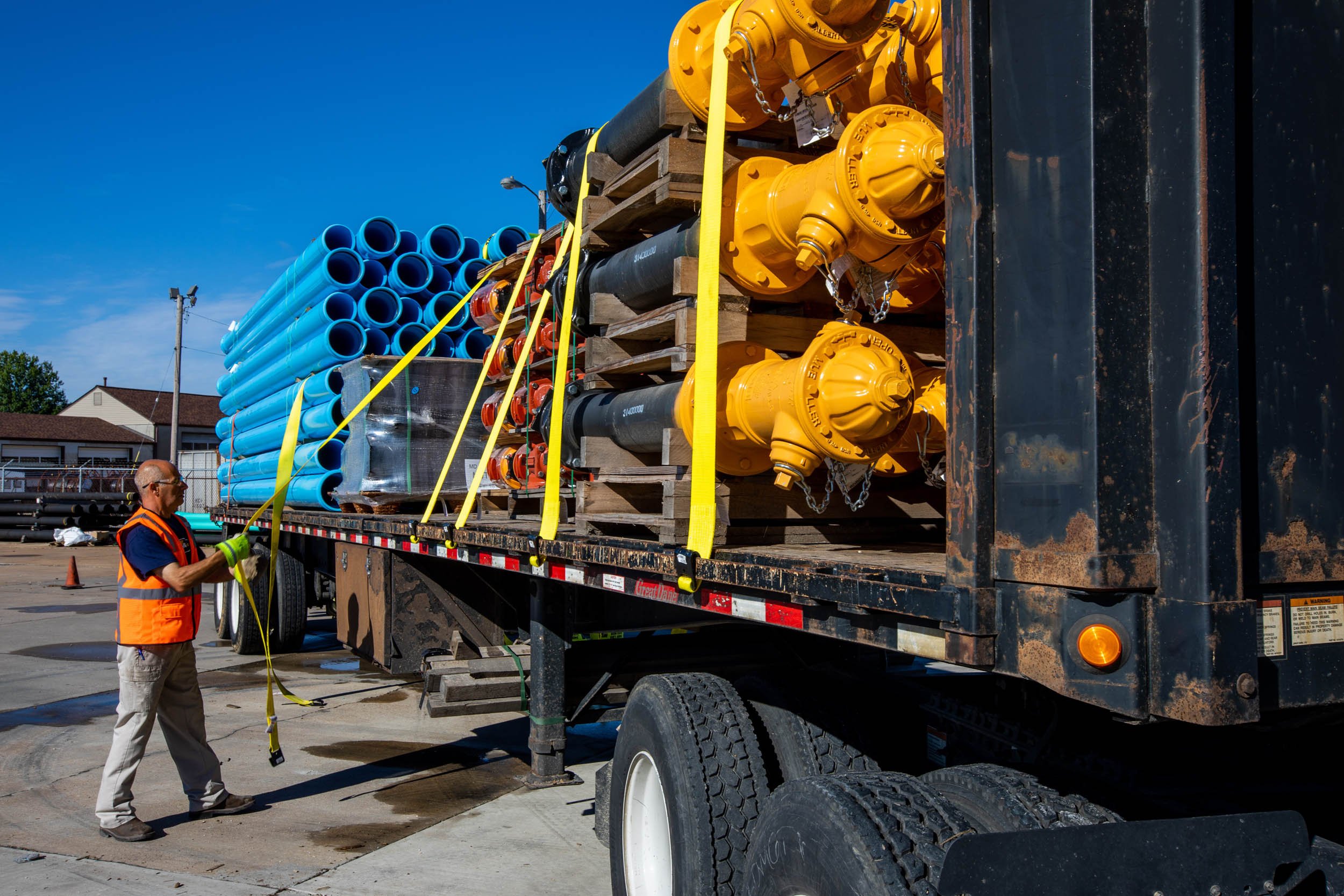- Home
- Supply Insights
- Fire Hydrant Maintenance & Supplies 101
Understanding the Role of Fire Hydrants
Fire hydrants play a crucial role in protecting public safety during emergencies and delivering clean water year-round. They’re an essential part of the firefighting infrastructure, equipping firefighters with the water supply needed to extinguish fires quickly and effectively. Their distinctive appearance and easy accessibility make them valuable tools for emergency responders.
Beyond their vital role in firefighting, hydrant flushing allows water and wastewater professionals to release stagnant water and minerals by exercising the hydrant and water main valves. Hydrants are critical elements in public safety, as they provide an essential water supply for firefighters and aid industry professionals in maintaining high water quality for their customers.
Neglecting fire hydrant maintenance can have severe consequences for public safety. Over time, fire hydrants can become damaged or malfunction due to wear and tear, weather conditions, vandalism, or vehicle collisions. If not properly maintained, these issues can significantly hinder the effectiveness of firefighting efforts and put lives at risk. Regular maintenance and inspection, as well as understanding how to repair a damaged hydrant, are crucial to ensure that fire hydrants remain in optimal working condition and ready for use when needed. Below, we’ll explore the steps, tools, and supplies required for fire hydrant maintenance.
Key Steps in Fire Hydrant Maintenance
Regular maintenance is essential to keep fire hydrants in proper working order. The following are key steps involved in fire hydrant maintenance:
- Inspection: Fire hydrants should be visually inspected regularly to check for any visible signs of
 damage or obstruction. This includes ensuring the hydrant is visible, accessible, and free from any debris or vegetation that may impede its use. If a hydrant is damaged or inoperable, put a 'not in service' bag on it so firefighting professionals can quickly identify a faulty hydrant and find a different source.
damage or obstruction. This includes ensuring the hydrant is visible, accessible, and free from any debris or vegetation that may impede its use. If a hydrant is damaged or inoperable, put a 'not in service' bag on it so firefighting professionals can quickly identify a faulty hydrant and find a different source. - Flow Testing & Exercising: Periodic flow testing is necessary to ensure that fire hydrants provide an adequate water supply. This involves opening the hydrant and measuring the flow rate and pressure. Flow testing helps identify issues, such as reduced water flow or low pressure, which can be addressed promptly. Periodically exercising the hydrant helps prevent mechanical problems and keeps the hydrant in proper working condition.
- Lubrication and Operation: Fire hydrants should be lubricated regularly to ensure smooth operation. This includes lubricating the operating nut, bonnet threads, and other moving parts.
- Flagging and Tagging: Fire hydrants should be flagged and tagged to quickly identify their locations. This helps professionals locate and utilize hydrants during fire emergencies or regular maintenance.
Follow these keys steps to ensure your communities hydrants are well-maintained and ready to serve during emergencies.
Essential Fire Hydrant Maintenance Supplies
Proper fire hydrant maintenance requires the use of specific supplies and equipment. The following are essential supplies needed for fire hydrant maintenance:
- Hydrant Wrench: A hydrant wrench is a specialized tool that opens and closes fire hydrants. It provides a secure grip on the hydrant's pentagon or square nut, allowing for easy operation.
- Hydrant Caps and Plugs: Hydrant caps and plugs seal hydrant outlets and prevent the entry of debris or contaminants. They are essential for maintaining the cleanliness and functionality of fire hydrants.
- Lubricants: High-quality lubricants, such as silicone or graphite-based lubricants, are necessary for lubricating the moving parts of fire hydrants. Lubricants help reduce friction and ensure smooth operation.
- Flow Testing Equipment: Flow testing equipment, including flow meters and pressure gauges, is required to measure fire hydrants' flow rate and pressure. This equipment helps determine the performance and efficiency of hydrants. When testing for flow, it's also important to dechlorinate the water being released to the environment with tablets or granular chemicals.
- Flagging and Tagging Supplies: During winter or nighttime operations, it's important to flag hydrants with a visible, reflective marker so that they can easily be found. Tagging supplies can display important information, such as the hydrant's location number or out-of-order status.
Implement these practices to maximize the efficiency and reliability of your fire hydrants, enhancing water quality and the overall effectiveness of firefighting operations.
Need something for your field team or facility? Explore our full range of hydrant tools and accessories with Core & Main Supply.

